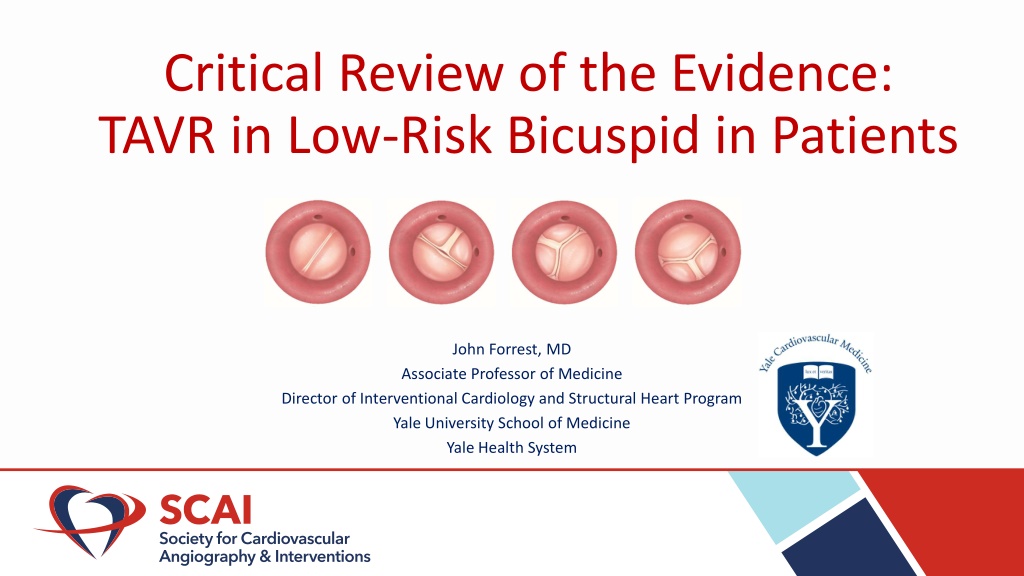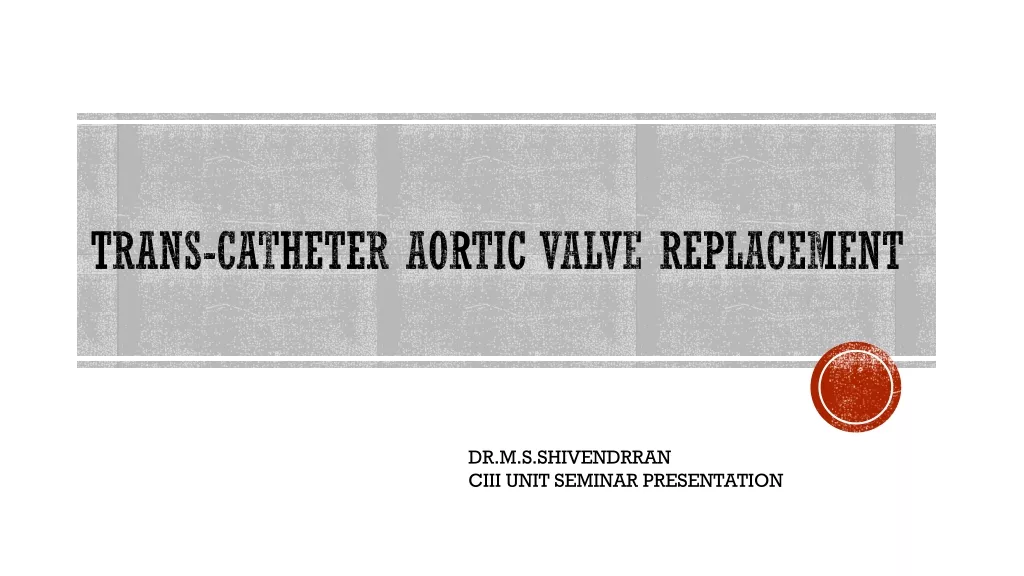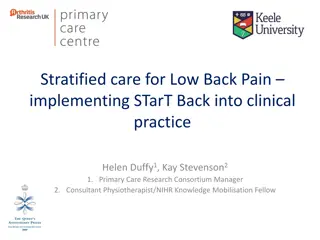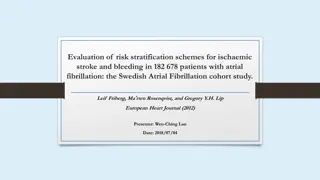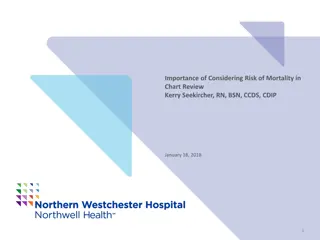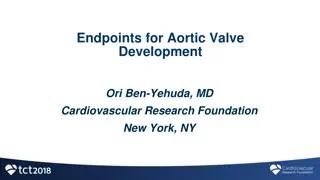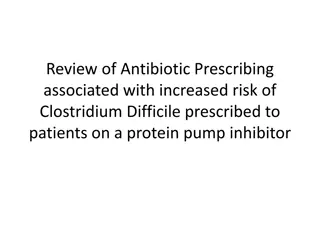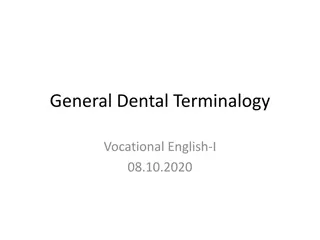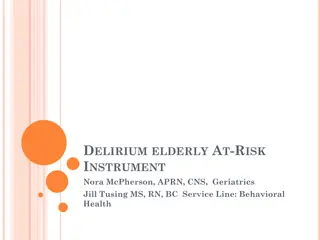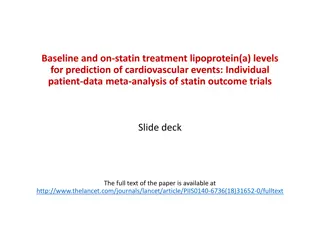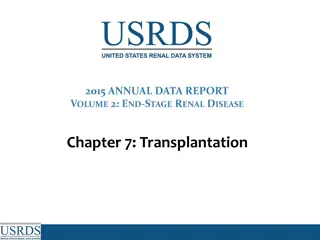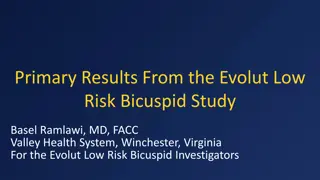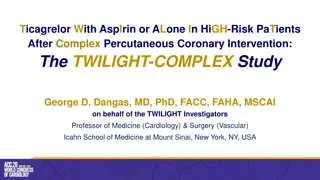Critical Review of TAVR in Low-Risk Bicuspid Patients
TAVR has shown promising outcomes in tricuspid aortic stenosis but has not been extensively studied in low-risk bicuspid patients. The Low Risk Bicuspid Trial aims to evaluate the procedural and short-term outcomes of TAVR in this patient population through a prospective study involving 25 centers. Key inclusion criteria include confirmed bicuspid aortic valve anatomy and a predicted risk of 30-day mortality below 3%. The study methodology involves baseline CTA, annular sizing, and long-term follow-up planning. This trial addresses an important gap in research regarding TAVR outcomes in low-risk bicuspid aortic stenosis patients.
Download Presentation

Please find below an Image/Link to download the presentation.
The content on the website is provided AS IS for your information and personal use only. It may not be sold, licensed, or shared on other websites without obtaining consent from the author. Download presentation by click this link. If you encounter any issues during the download, it is possible that the publisher has removed the file from their server.
E N D
Presentation Transcript
Critical Review of the Evidence: TAVR in Low-Risk Bicuspid in Patients John Forrest, MD Associate Professor of Medicine Director of Interventional Cardiology and Structural Heart Program Yale University School of Medicine Yale Health System
Disclosures I serves as a consultant and physician proctor for: Edwards Lifesciences, and Medtronic Inc. The Yale Structural Heart Disease Fellowship Program receives grants from Edwards and Medtronic.
Background TAVR has demonstrated excellent outcomes in tricuspid aortic stenosis and is currently approved for patients across all risk classes. Patients with bicuspid aortic stenosis have been excluded from major TAVR trials. Recent retrospective reports from the TVT Registry have suggested that outcomes of TAVR in intermediate-high risk patients with bicuspid valve disease are similar to that for tricuspid patients. Prior to Low Risk Bicuspid Trial, there have been no prospective studies assessing TAVR in low risk patients with bicuspid aortic stenosis.
The Low Risk Bicuspid Trial* Objective To assess the procedural and short term (30-day) outcomes of TAVR in low risk patients with bicuspid aortic valve stenosis. *Presented at ACC.20 by Dr. Ramlawi
Study Methods Multicenter, prospective, single-arm study at 25 centers also participating in Evolut Low Risk Trial Baseline CTA to confirm bicuspid morphology and anatomic suitability Patient eligibility reviewed by local Heart Team & Screening Committee Implant Procedure Annular sizing for all patients Pre-TAVR balloon valvuloplasty strongly encouraged CEC adjudicated all endpoint-related adverse events Hemodynamics centrally assessed by echocardiographic core laboratory Patient follow-up planned for 10 years
Key Inclusion Criteria Inclusion/exclusion criteria and screening process based on Evolut Low Risk Trial Symptomatic and asymptomatic severe AS1 A predicted risk of 30-day mortality <3% per multidisciplinary local Heart Team assessment Bicuspid aortic valve anatomy confirmed by CTA 1Nishimura RA, et al. Circulation. 2014;129:2440-92
Key Exclusion Criteria Age < 60 years* Ascending aorta diameter > 4.5 cm* Trileaflet aortic valve on CTA* Multivessel coronary artery disease (SYNTAX score >22) Prohibitive LVOT calcification Anatomic dimensions outside recommended range SOV Annulus * Criteria that differ from Evolut Low Risk Study
Study Endpoints Primary Safety Endpoint All-cause mortality or disabling stroke at 30 days Primary Efficacy Endpoint Device Success Absence of procedural mortality AND Correct position of 1 valve in the proper anatomical location AND Absence of > mild aortic valve regurgitation
Patient Flow Excluded (n=72): - Exclusion criteria met (n=60) - Patient withdrawal (n=2) - Physician withdrawal (n=3) - Other (n=7) Patients consented (n=222) Attempted procedure (n=150) Aborted procedure (n=1) Implanted TAV (n=149) Conversion to surgery (n=1) Discharged with TAV (n=148) Death (n=1) 30-Day follow-up (n=147)
Reasons for Study Exclusion N = 60 46 17 15 9 4 1 5 3 2 2 1 1 Anatomical reasons Tricuspid aortic valve Aortic annulus size (perimeter) Mean ascending aorta > 45 mm Aortic root dimensions: SOV diameter Prohibitive LVOT calcification Risk of mortality outside protocol (> low risk) Contraindication for placement of bioprosthetic valve Allergies Did not meet severe AS criteria Age less than 60 years Other condition excluding from study per investigator
Baseline Clinical Characteristics Mean SD or no. (%) N = 150 Age, years 70.3 5.5 Male sex 78 (52.0) STS PROM, % 1.4 0.6 NYHA Class III or IV 41 (27.3) Peripheral arterial disease 14 (9.3) Chronic lung disease/ COPD 26 (17.7) Prior coronary artery bypass grafting 2 (1.3) Mean gradient, mm Hg 48.0 16.1 Aortic valve area, cm2 0.8 0.2
Bicuspid Valve Sievers Subtypes Type I Left-Right N = 107 Type I Right-Non N=27 Type I Non-Left N= 2 Type 0 N = 14 9.3% 71.3% 18.0% 1.3% No patients had Sievers Type 2
Procedural Characteristics No. (%) N = 150 No. (%) N = 150 Valve Repositioned General anesthesia 49 (32.9) 95 (63.3) Implanted valve size Iliofemoral access 147 (98.7) 23 mm Embolic protection 0 (0.0) 45 (30.0) 26 mm Pre-TAVR balloon dilation 32 (21.5) 137 (91.3) 29 mm Post-TAVR balloon dilation 55 (36.9) 55 (36.9) 34 mm > 1 valve implanted 62 (41.6) 5 (3.3)
Outcomes at 30 Days No. of patients (KM estimates as %) N = 150 All-cause mortality or disabling stroke 2 (1.3) All-cause mortality 1 (0.7) Disabling stroke 1 (0.7) Non-disabling stroke 5 (3.3) Major vascular complication 2 (1.3) Aortic dissection 0 (0.0) Annular rupture 0 (0.0) New Permanent pacemaker 22 (15.1) Coronary artery obstruction 1 (0.7) Excludes patients with baseline permanent pacemaker.
Additional Outcomes at 30 Days No. of patients (%) Device success Patient-prosthesis mismatch None Moderate Severe Mean gradient > 20 mm Hg 141/148 (95.3) 115 (87.1) 10 (7.6) 7 (5.3) 2/146 (1.4)
Valve Hemodynamics by Subtypes Type 0 Type 1 18
Total Aortic Valve Regurgitation at 30 Days Implant population. Core lab assessments.
Summary TAVR with the Evolut valve in low-risk bicuspid patients achieved favorable procedural and short term (30-day) results: 95.3% device success Low mortality and stroke at 30 days (1.3%) Low rates of PVL (no moderate/severe) Consistent hemodynamics across Sievers Classification Patients will be followed for 10 years
Limitations Non-randomized study design Procedural and short-term outcomes (30 day) Study performed at high volume experienced centerswho were also participating in Evolut Low Risk Randomized Study
Clinical Implications In this prospective study, procedural and 30-day results demonstrated that TAVR with the Evolut Valve was safe and effective in low risk patients with bicuspid aortic stenosis. Longer-term outcomes are needed, and carefully constructed randomized controlled trials comparing TAVR to surgery in this patient population should be considered prior to any changes in clinical guidelines. THANK YOU
